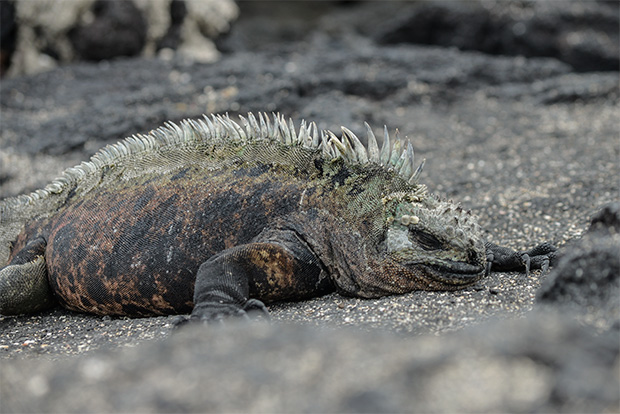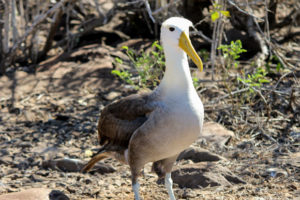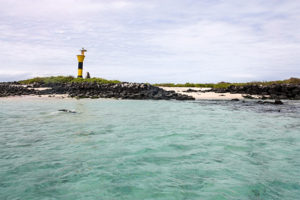Last minute offers to Galapagos Islands December 2023
Vegetation and climate of the Galapagos: luxury and nature combined. Last minute offers to Galapagos Islands December 2023.
The Galapagos Islands, known worldwide, are the result of many eruptions of submarine volcanoes that continue to occur in the present. Due to peculiar location they have developed species unique in the world, of a beauty difficult to believe. For this reason they are one of the most required destinations for nature-loving travelers and wild species.
Although the islands are located on the equator, the temperature of the ocean surface varies widely between 6 and 28 degrees Celsius during the year. Weather is determined by surface temperature and ocean currents, which create microclimates that, vary the particular habitats of the flora and fauna of each island. The islands in the same way have drastic climatic changes and each season presents its own peculiarities. The period of time that goes from January to March are the rainy months, with March being the warmest month of the year. At this time there are lots of plants, and the ocean temperature is ideal for snorkeling. From July to September, there is less precipitation and the islands are drier, but cooler, the sea temperature is considerably reduced, being the ideal season to see the life of the sea, since the animals have a preference for cold waters.
If you need a brief summary of what you might be surprised when traveling to the beautiful Galapagos Islands on a catamaran cruise, we show you some of the tourist attractions that you can visit. If you have doubts about the conditions of the trip and the days of duration, please contact us.
Genovesa Island: Genovesa island is also known as the island Tower and is considered as the most striking island of the archipelago. Its name comes from the city of Genova (Italy) in where it´s said that was the birthplace of Columbus. It is the ideal location for the ornithologists by the abundant presence of birds, highlighting some as seagulls of tail separated or lava seagulls, which are the only gulls in the world who have nocturnal hunting habits. Genovesa Island is an extinct volcano, which has suffered several landslides due to its ancient activity. We can find two areas of visit which is can access through a fissure that exists to the feet of the volcano doing this walk an unparalleled adventure. The island has shaped of horseshoe. Millions of years ago were a huge volcano whose southern wall collapsed, forming the Great Darwin Bay, where currently some birds have their nests. In the center of the Genovesa Island is the Arcturus Lake, of salt water, where resides the marine iguana smaller of the archipelago. In the same way, it is possible to see marine iguanas, fur seals and a huge forest of Palo Santo. At Darwin Bay, It is possible to dive along the inner to the outer wall. Another possibility is from the outer side of the volcano through the channel in the boiler. Genovesa is home of a great number of oceanic birds, both for breeding and nesting, including large frigates, blue-footed boobies, seagulls of frac, tropical birds, finches of Darwin and petrels.

[enlace_dinamico_en]
Isabella Island: Even though is the largest island of all, it has a unique town corresponding to Villamil Port, a beautiful village in which there are numerous accommodations and whose atmosphere is notable for being rather more quiet than Ayora Port. Inside its main attractions stand out Punta Moreno, where live flamingos and many other types of birds, from where you have a beautiful view of Sierra Black, Blue Hill and the top of Fernandina Island. To discover other kinds of wildlife is a good idea to move to Urbina Bay, where there are iguanas, sea lions, cormorants, penguins and blue-footed boobies.
North Seymour Island Trail: The small island of Seymour North is considered one of the most extraordinary places on the islands to see birds, housing the largest colony of royal frigates, as well as blue-footed boobies and bifurcated seagulls. The island maintains only a running trail, which, two kilometers in length allow us to appreciate its rocky landscapes, where there are only some shrubs and cactus, there are countless birds and iguanas.
Black Turtle Cove: The Black Turtle Cove is a mangrove estuary on the north coast of Santa Cruz Island. It maintains very strict regulations to protect its flora and fauna. The tourists are allowed to reach to the cave aboard of small boats, but without starting the engine. Many rays, turtles, penguins, and other wild animals live in this area, so that not a few groups of academics transiting the area, either to analyze the formations of volcanic origin, as the important existing fauna.
GalapagosInformation, specialists in catamaran tours all included
Luxurious rooms, exotic dinners and trips designed to take advantage of the time to the maximum are our seal to all our clients.
















